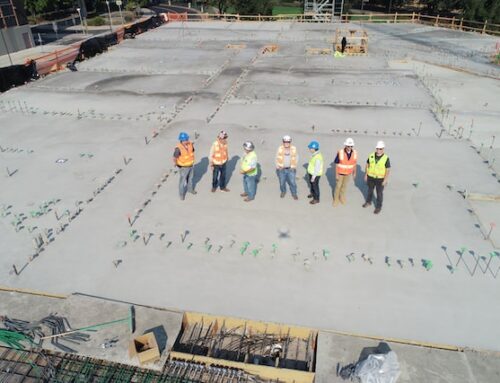 In the construction industry, managing credentials is a critical aspect of worksite safety and efficiency. While Learning Management Systems (LMS) have traditionally been used for this purpose, CVS offers a unique and comprehensive solution. This article will compare CVS and LMS to help you understand the benefits of each.
In the construction industry, managing credentials is a critical aspect of worksite safety and efficiency. While Learning Management Systems (LMS) have traditionally been used for this purpose, CVS offers a unique and comprehensive solution. This article will compare CVS and LMS to help you understand the benefits of each.
What is a Learning Management System (LMS)?
An LMS is a digital platform that manages and delivers educational courses or training programs. In the construction industry, companies often use LMSs to train their workers and track their progress. The end product of an LMS, when someone has completed a course, is a certificate or completion card which can be sent by email or printed.
What is CVS?
The primary objective of CVS (Credential Verification Service) is to easily look up and verify workers’ credentials from the field or the jobsite. Secondarily, CVS greatly facilitates the management of training records for construction companies and similar organizaions. Unlike an LMS, CVS doesn’t deliver training or issue credentials. CVS is issuer-agnostic, allowing you to upload credentials from any source: online or in-person training, historical or current records, in-house or external coursework.
Comparing CVS and LMS
Both CVS and LMS play key roles in managing construction worker credentials, but there are important differences. In general, the output of an LMS is the input to CVS – so generally coursework completed in an LMS is subsequently recorded in the CVS database.
Access: CVS is designed to be primarily accessed using mobile devices out in the field, without an app or login procedures. An LMS is designed for use by office users on desktop devices.
Ease of Use: CVS is designed to be easy to use in the field. Workers’ credentials can be accessed using a QR code on an ID badge or hardhat sticker, allowing for real-time verification. LMS systems were not generally designed with field workers in mind.
Flexibility: With CVS, you can manage credentials from any issuer, providing flexibility that an LMS may not offer. Many LMS systems provide none or limited information on coursework completed outside of the LMS.
Additional Features: In addition to managing credentials, CVS also provides many features designed for the use of worksite users. This includes looking up emergency medical information, tracking PPE usage, sign-in sheets for tool-box talks, looking up documentation, etc.
Why Choose CVS?
While an LMS is absolutely necessary, CVS offers a comprehensive solution for managing training records in the construction industry. Its ease of use, flexibility, and additional features make it a valuable tool for any construction company looking to improve safety and efficiency on their worksites. Most construction companies rely on various training providers, so the LMS only has a partial view of training records. CVS is designed to be an umbrella service with access to every training record, wherever the coursework was completed.
Integration between LMS and CVS
Many CVS customers have implemented an integration between CVS and their LMS. In general, new training recorded in the LMS gets sent to the CVS database on a nightly basis via a RESTful API. In fact, some customers that use several LMS services have several integrations funnelling these courses into the CVS system. This avoids dual entry and ensures that different data bases, used for different purposes, remain in synch.
Conclusion
In the comparison of CVS and LMS for construction credential management, CVS provides unique benefits that enhance worksite safety, efficiency, and flexibility.
Interested in learning more about how CVS can streamline your construction credential management? Contact us today!




